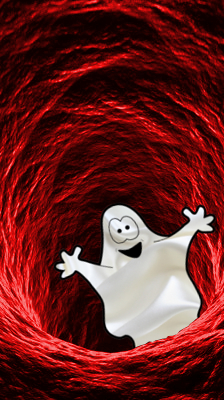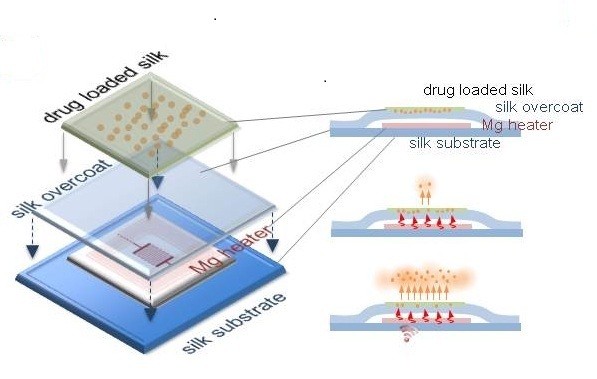Silk suit for anti-bacterial ghost
 Researchers have demonstrated a device which can be implanted in the body, destroy bacteria, and then dissolve safely.
Researchers have demonstrated a device which can be implanted in the body, destroy bacteria, and then dissolve safely.
The implant is made mostly of silk and magnesium, so that it is harmlessly absorbed when the job is done.
It can even be triggered from outside the body with a wireless signal.
“This is an important demonstration step forward for the development of on-demand medical devices that can be turned on remotely to perform a therapeutic function in a patient and then safely disappear after their use, requiring no retrieval,” said senior researcher Fiorenzo Omenetto, professor of biomedical engineering at the Tufts University School of Engineering.
“These wireless strategies could help manage post-surgical infection, for example, or pave the way for eventual 'wi-fi' drug delivery.”
Implants of all kinds usually use non-degradable materials, some with limited operational lifetimes, so they must eventually be removed or replaced.
But the new generation of wireless therapy devices are strong enough to survive handling during surgery, and harmlessly dissolve within minutes or weeks, depending on how the silk protein is processed.
The device consists of a serpentine resistor and a power-receiving coil made of magnesium deposited onto a silk protein layer.
The magnesium part is encapsulated in a silk "pocket" that protected the electronics and control its dissolution time.
The magnesium functions as a heater underneath a bed of whichever drug is being delivered. As it warms up, the heater frees the drug from its silk sheets so that it can disperse within the body.
In the latest test to eliminate bacterial infection in mice, devices were implanted in vivo in S. aureus infected tissue and activated by a wireless transmitter for two sets of 10-minute heat treatments.
Tissue collected from the mice 24 hours after treatment showed no sign of infection, and surrounding tissues were found to be normal.
The devices completely dissolved after 15 days, and magnesium levels at the implant site and surrounding areas were comparable to levels typically found in the body.
 The team also conducted in vitro experiments with similar remotely controlled devices releasing the antibiotic ampicillin to kill E. coli and S. aureus bacteria.
The team also conducted in vitro experiments with similar remotely controlled devices releasing the antibiotic ampicillin to kill E. coli and S. aureus bacteria.
The wireless activation of the devices was found to enhance antibiotic release without reducing antibiotic activity.
A full report on the study, titled ‘Silk-based resorbable electronic devices for remotely controlled therapy and in vivo infection abatement’, is available online.








 Print
Print